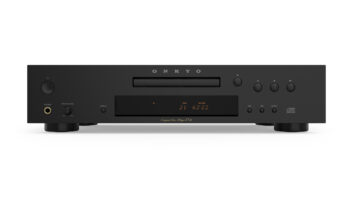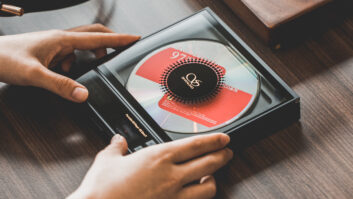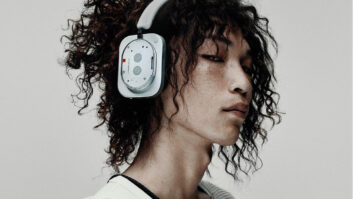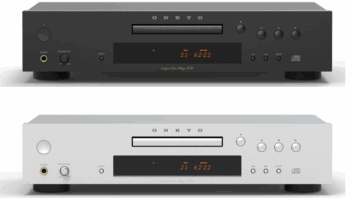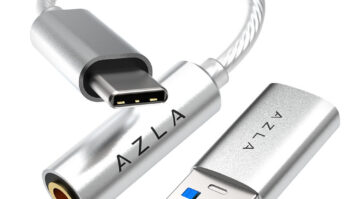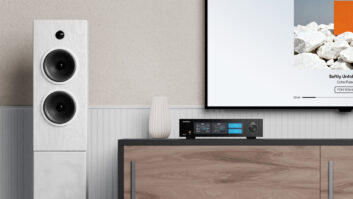Secaucus, N.J. — Panasonic forecasts a significant expansion this year in its dollar volume of headphone CD players, attributing its optimism to the category’s accelerating growth rate, an expanded selection of tuner-equipped CD players, and its continued sponsorship of extreme sports competitions targeted to the growing 16- to 24-year-old age group.
Industrywide, factory-level headphone CD sales rebounded in 1999 to grow 6.2 percent in dollars, CEA statistics show, but the growth rate will accelerate this year into the double digits, said Reid Sullivan, assistant GM for portable audio. Full-year factory sales, however, probably won’t sustain the 40.6 percent growth rate posted in the January-April period, in part because the statistics reflect early introductions this year by many manufacturers, he said.
Sales of tuner-equipped headphone CDs are also on the rise, accounting for 7.7 percent of the industry’s factory-level unit sales through May, CEA statistics show. Panasonic expects tuner-equipped models to account for more than 10 percent of industrywide headphone CD units in 2000 and for more than 20 percent of Panasonic’s headphone CD unit sales, Sullivan said.
Headphone CD sales are rising dramatically for several reasons, including a growing demographic base of 16- to 24-year-olds and lower prices that have expanded the custom base to children younger than 16, Sullivan said. New technology that makes many new models “virtually skip-free,” and thus usable in more situations, is also driving up sales, Sullivan said.
This year Panasonic is promoting all but one entry-level CD player under the CD Jogger banner, which indicates a model that’s skip-free in all but the most extreme circumstances, Sullivan said. Last year the company promoted only one model under that banner, and it delivered near-skip-free performance only when tucked into a waistband pouch that kept the product in a vertical position. This year’s models are virtually skip-free in vertical and horizontal positions without a pouch, said Sullivan, who pointed out that competitors’ ads promoting skip-free models indicate in smaller type that the models are skip-free in all but the most extreme circumstances.
Heavy advertising of Internet audio portables has also stimulated headphone CD sales by promoting portable audio awareness, Sullivan said.
As announced at CES, Panasonic plans to enter the Internet portable market this year with a single-battery device that uses SD (Secure Digital) memory cards. In recent weeks, the company also announced plans to incorporate RealNetwork’s RealJukeBox music-management software, but Panasonic hasn’t revealed the compression formats that the device will support.
Dollar sales of headphone CDs will also rise this year, in part because of a growing selection of tuner-equipped models that drives up the purchase price, Sullivan said. To tap into this market, Panasonic has increased its selection to four models from one, all with digital AM/FM tuners. All are available.
“Last year, we had one model, which was at $129, and it did so well that we were short for the fall,” Sullivan said.
The latest of the four new tuner-equipped models is the SL-SW869V in the company’s ShockWave series of sports-type headphone portables. Its retail price ranges from $179 to $199. The other tuner-equipped models retail from $99 to $129.
Tuner-equipped personal CDs have been available from a handful of companies for years, but for two reasons, they haven’t been made available in quantity, Sullivan said. First, previous generations of headphone CD players were bulky, and the addition of a tuner and shielding to isolate the tuner from the laser mechanism only made them bulkier. Second, headphone CDs were pricey. “With the prices of [headphone] CDs down, consumers will step up about $20 [for a tuner],” Sullivan said.
Other new headphone portables recently launched by Panasonic include two other CD players, both without tuner; a personal cassette; and an armband radio, all in the ShockWave family. The cassette and one of the CDs features Brain Shaker headphones that vibrate when low bass frequencies are detected.
Panasonic’s headphone CDs are CD-R compatible and “not yet” CD-RW compatible, Sullivan noted.
In 1998 and 1999, Panasonic claimed top market share in dollars in sports-type headphone CDs, largely because of its continuing sponsorship of extreme sports competitions, including the Panasonic ShockWave National Skate Series, ShockWave Beach Games, ShockWave surfing tour and ShockWave King of Dirt BMX Series bicycling contests. Panasonic spends a “seven-digit dollar figure” to participate in and promote the events, some of which are televised, Sullivan said.




